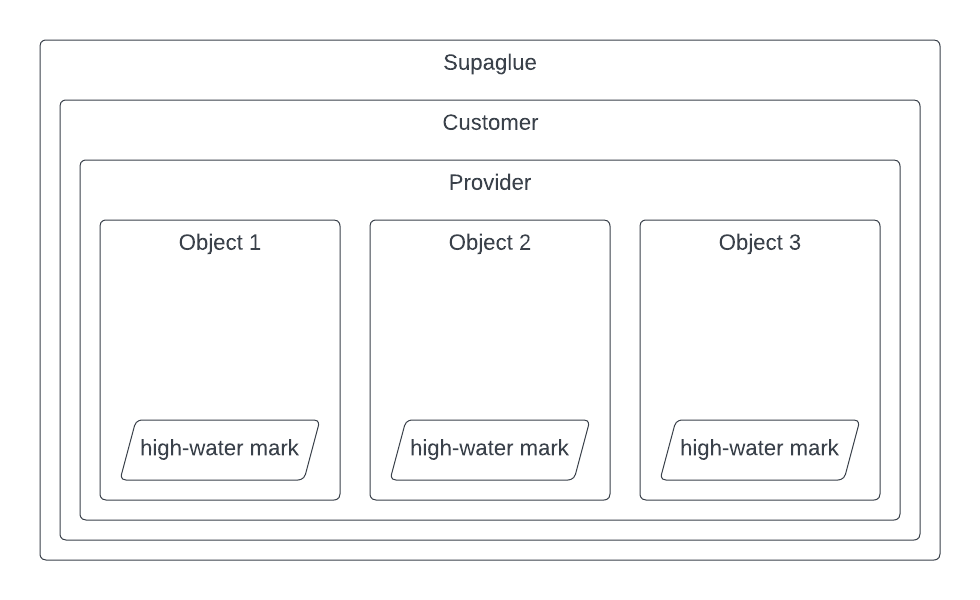Pagination
Supaglue provides a _supaglue_last_modified_at timestamp field on the tables it syncs, or last_modified_at when you use the Unified or Data Listing API, representing the last time a record was modified in the upstream provider. Use this field as a high-water mark to sync from Supaglue-managed tables into tables you manage.
A Supaglue Sync runs on a per-Object, Provider, and Customer basis. Therefore, you should keep track of high-water marks for each combination of Customer-Provider-Object.


How to paginate
Use the following process to paginate on a per Provider-Customer-Object basis:
- Read the last high-water mark (use an epoch of 0 if none).
- Read the newly-synced records since the last high-water mark. Transform and upsert from Supaglue-managed tables into tables you manage. Keep track of the new high-water mark.
- Save the new high-water mark.
Storing and reading high-water mark state
Supaglue Syncs operates on a per Customer-Provider-Object basis. We recommend you keep track of high-water mark state at that granularity. For example, you can store it in a database table named SyncState that looks like the following:
Table "production.sync_state"
Column | Type | Collation | Nullable | Default
--------------------------+--------------------------------+-----------+----------+---------
provider_name | text | | not null |
customer_id | text | | not null |
object_name | text | | not null |
maxLastModifiedAt | text | | not null |
Indexes:
"sync_state_pkey" PRIMARY KEY, btree (provider_name, customer_id, object_name)
Read the last high watermark
function getLastHighWatermark(webhookEvent) {
const state = await prismaApp.syncState.findUnique({
where: {
providerName_customerId_object: {
providerName: webhookEvent.provider_name,
customerId: webhookEvent.customer_id,
object: webhookEvent.object_name,
},
},
});
return state?.maxLastModifiedAt?.getTime();
}
Update the high watermark
function updateHighWatermark(webhookEvent) {
const state = {
providerName: webhookEvent.provider_name,
customerId: webhookEvent.customer_id,
object: webhookEvent.object_name,
maxLastModifiedAt: newMaxLastModifiedAtMs ? new Date(newMaxLastModifiedAtMs) : undefined,
};
await prismaApp.syncState.upsert({
create: state,
update: state,
where: {
providerName_customerId_object: {
providerName: data.provider_name,
customerId: data.customer_id,
object: data.object,
},
},
});
}
Please note the example above is a basic implementation of pagination. In a production setting you will want to batch writes/updates for efficiency.